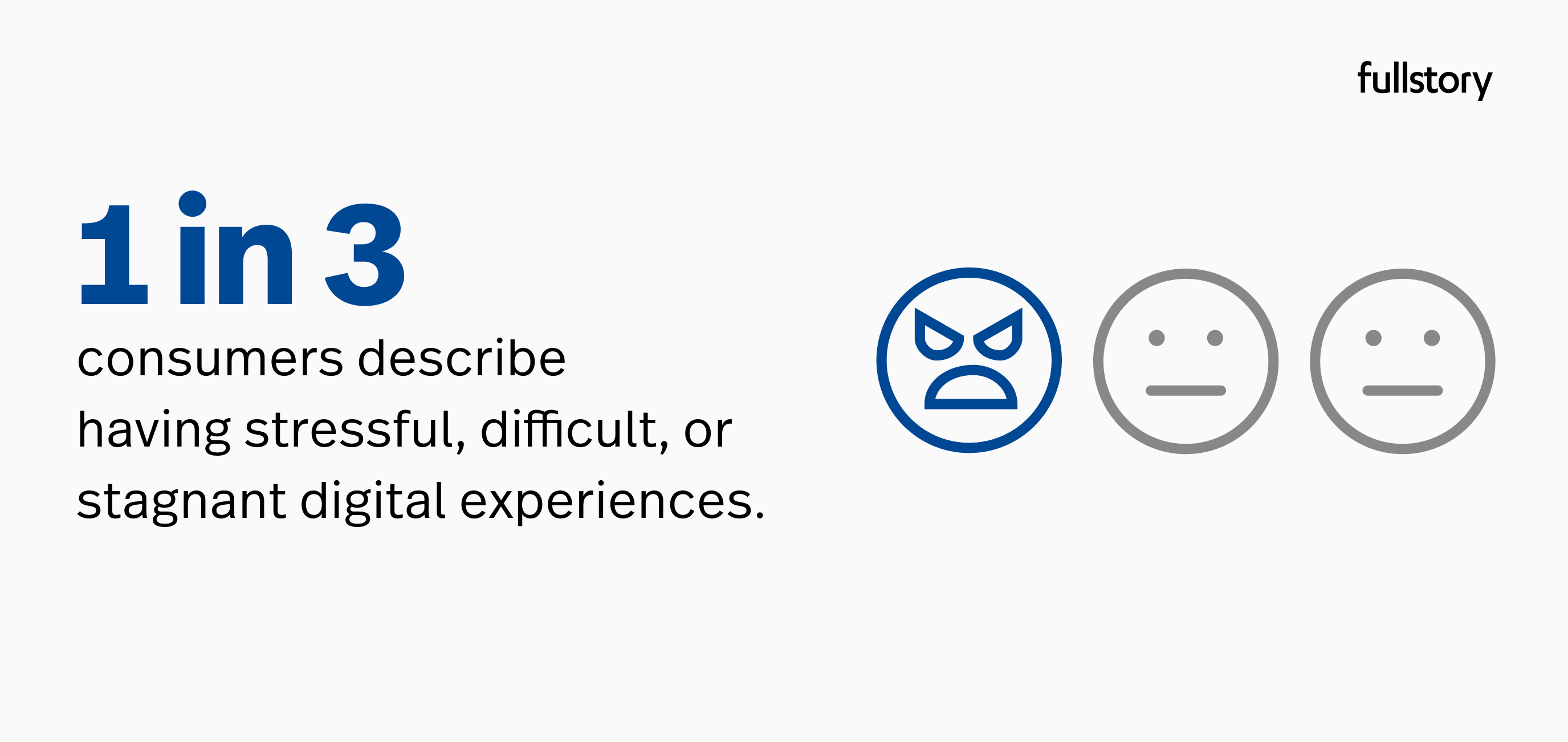5 mobile digital experience trends for 2023
- Tuesday, April 11th, 2023
- Share this article:
Andrew Fairbank, VP of EMEA at FullStory, offers advice for brands looking to offer their customers seamless digital experiences on mobile.
 Our expectations of digital experiences could hardly be higher as we head deeper into 2023. For example, it seems that 60 per cent are prepared to pay extra for a frictionless online brand interaction. One in ten say they would pay as much as 25 per cent more, according to a survey of global digital experience trends in 2023.
Our expectations of digital experiences could hardly be higher as we head deeper into 2023. For example, it seems that 60 per cent are prepared to pay extra for a frictionless online brand interaction. One in ten say they would pay as much as 25 per cent more, according to a survey of global digital experience trends in 2023.
By the same token, were leaning towards our mobiles for these transactions, with 51 per cent of us preferring them to a large screen.
But at the same time, tighter monetary conditions across the globe are convincing consumers to spend less frequently. 49 per cent say theyll pull back on online shopping in general, 42 per cent on in-store visits, and 20 per cent will cancel subscriptions this year.
In the face of high competition for increasingly discerning shopping budgets, brands are desperate to impress consumers with seamless digital experiences, especially on their mobiles, to win them over. They can start by aligning to the trends currently shaping digital experiences.
1. A good digital experience beats brand loyalty
Marketers often assume people will jump through hoops for their favourite brands. Consumers are telling us that’s not true. More than a third of Brits (38 per cent), almost half of Germans (48 per cent) and more than half of Dutch people (53 per cent) say they “dont care” where they buy from “as long as it works”. A brand experience is as strong as its weakest link. If that happens to be mobile, which is growing in importance for consumers, challenges undoubtedly lie ahead.
The Retail and Grocery industries have cottoned onto the mobile opportunity, scoring 64 per cent and 63 per cent respectively for in-app experiences. However, the Automotive and Gaming industries have some catching up to do, with only 38 per cent of consumers reporting great in-app experiences.
2. Consumers feel triggered by loading issues (but they might not say so)
This trend may not be surprising. One in three consumers describe having a stressful or stagnant digital experience, and loading issues on a site or app frustrates them the most. 72 per cent place slow load times as their number one frustration, while 63 per cent say loading errors top the frustration chart.
Deadlinks or buttons scored 46 per cent and forms that refuse input came in at 39 per cent. Todays consumers dont want to encounter broken forms or page glitches on their mobile screen. Thats why listening to their feedback has never been more important. 
But how do you get that feedback when the data tells us only 43 per cent are willing to give it, and the rest would rather walk away from a poor experience without saying a word? Increasingly the only reliable way of listening to consumers and their frustrations is intelligently, through digital experience analytics.
3. Consumers might not be back even if you address their frustration
When it comes to changing consumers perceptions of you, all signs point to you not getting a second chance to make a good first impression. Survey data revealed that 65 per cent are likely to leave without completing their transaction if they encounter frustration, and 55 per cent say they wont be back. In this age of consumer empowerment, prevention is better than cure, and retention is crucial. Serving up a seamless digital experience has never been more important.

4. Brands will have to fill their own cookie jars
There are different ways for brands to gather that all-important customer data that helps target more sales. First-party data is collected first-hand from your own site or mobile app. It comes directly from your audiences and tends to be accurate and valuable. Third-party data is collected by a separate business with no direct connection to you or your audiences, raising privacy concerns. So, Apple, Mozilla, and Google announced plans to phase out third-party cookies. Frankly, several browsers already block third-party cookies by default, leaving those who still need a viable first-party data strategy holding an empty cookie jar.
With first-party data so critical for understanding consumers, brands must be capable of securely logging user and visitor information from digital experiences on their sites and in their apps. Digital Experience Intelligence (DXI) can help mobile marketers, among others, by providing opportunities for customers to share precisely only the data they want tol. You could think of it as a way to step into your customers’ shoes and see your apps as they do.
5. Super app development is going into hyperdrive
Super apps are shaping up to be a great way to collect all that first-party data. Gartner likens these “everything apps” to a Swiss Army Knife, giving users access to tens of mini apps they can either use or remove. As a result, they’re becoming quite a talking point. Built to meet the demand for mobile-first experiences of smartphone generations, we are likely to “see super apps gain interest from forward-thinking organisations,” says Gartner VP analyst Jason Wong.
WeChat might be the world’s most notorious super app with 800 million users, with instant messaging, the ability to share life events, arrange a catch-up with a friend, pre-order food from a restaurant, book a taxi, get directions, pay for the meal (or reimburse friends by sending them money), check movie times and book tickets, and go shopping all via a single login. FinTechs dominate the super app scene in Europe, with Klarna, Lydia and Revolut developing multi-product mobile offerings. And Middle Eastern company Careem is also making waves with its all-in-one app for moving around, ordering food, booking deliveries and transferring money.
Consumers have high digital expectations
These are just a few developments challenging the mobile digital experience landscape in 2023. The bottom line is this: Organisations need to provide exceptional, easy-to-use digital experiences to retain consumers. Fortunately, consumers are forthcoming about their needs. And for those listening, their online behaviour says it all.
















